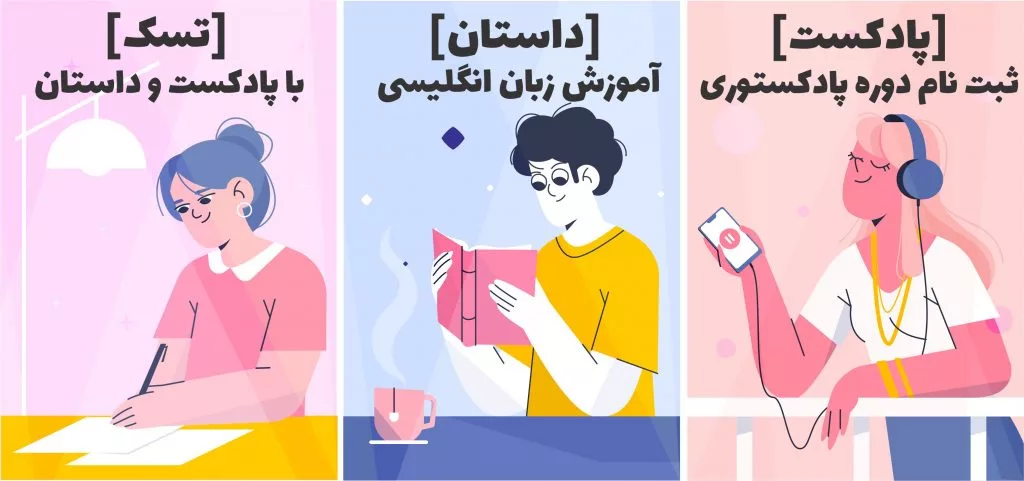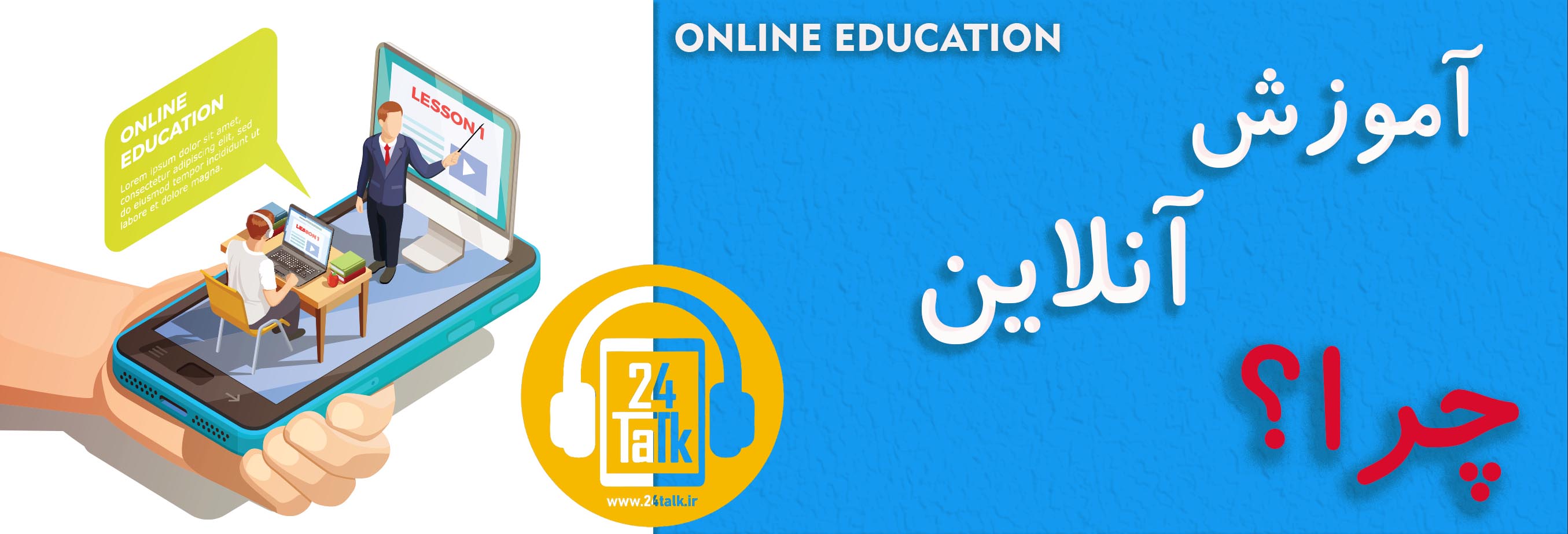پادکست انگلیسی BBC – هوش کامپیوتری
بعضی وقتها سخت میشه تشخیص داد که یه نفر داره واقعا لبخند میزنه یا داره تظاهر به لبخند زدن می کنه. اما الان کامپیوترهایی ساخته شدن که می تونن لبخند واقعی رو از لبخند الکی تشخیص بدن! این کامپیوترها چطوری کار می کنن و چه فایده ای دارن؟ آیا شما می تونین فرق بین لبخند واقعی و لبخند الکی رو تشخیص بدین؟ (نظر خودتون رو به انگلیسی در بخش دیدگاه با ما در میون بذارید!) در پادکست انگلیسی BBC – هوش کامپیوتری می شنویم که نیل Neil و سم Sam درمورد این موضوع صحبت می کنند و در طول مسیر کلماتی رو آموزش میدن که امیدواریم لبخند واقعی روی لبهاتون بیاره.
سوال پادکست انگلیسی BBC – هوش کامپیوتری :
The expressions we can make with our face are controlled by muscles. How many muscles do we have in our face?
A: 26
B: 43
C: 62
به پادکست خوب گوش کن تا جواب رو پیدا کنی.
اگر می خوای گوش دادن به پادکست تا حد امکان برات ساده و کارآمد باشه مراحل زیر را دنبال کن:
هر روز به پادکست گوش کن. وقتی براش یه وقت ثابت در روز در نظر بگیری برات تبدیل به عادت میشه و این عادت هرروز پیشرفت میکنه.
پادکستی رو پیدا کن که موضوعش برات جالب باشه. وقتی از خود موضوع لذت ببری یادگیری هم برات لذتبخش میشه.
به پادکستی گوش کن که transcript یا متن داره. این بهت کمک می کنه تا کلمات و عبارات جدید رو به سرعت در متن پیدا کنی و ساختار انواع مختلف جمله رو خوب یاد بگیری.
پس از گوش دادن به پادکست با متن، در مرحله بعدی سعی کن بدون نگاه کردن به متن این کار رو انجام بدی. این کار مهارت شنیداری رو تقویت می کنه و کمک می کنه تا انگلیسی زبانان بومی را راحت تر درک کنی، حتی اگر خیلی سریع صحبت کنن.
اگه به پادکست انگلیسی گوش کردی و نتونستی کامل متوجه اش بشی، ناامید نشو. پادکست هایESL -English as Second Language بیشماری وجود دارن که برای سطوح مختلف، از ابتدایی تا پیشرفته طراحی شدن. مطمئنا هر روز می تونین یه پادکست مناسب با سطح خودت پیدا کنی.
فراموش نکن که هرچی بیشتر تمرین کنی در اون مهارت رشد میکنی! به قول انگلیسی ها: Practice makes perfect
واژگان کلیدی پادکست انگلیسی BBC - هوش کامپیوتری
| معنی به فارسی | معنی به انگلیسی | واژه |
| مربوط به چهره | adjective to do with the face | facial |
| استنباط کردن | to come to a decision about something using the information you have, which may not be complete | to infer |
| در زمان حال، بدون تاخیر | at the same time as, without delay | in real time |
| باعث اتفاق افتادن چیزی شدن | to cause something to happen | to induce |
| اصل، واقعی | real, not fake | genuine |
| کشف کردن | to calculate, to work out | to figure out |
BBC 6 minute English - Faking it: Computers that spot a real smile

متن پادکست انگلیسی BBC - هوش کامپیوتری
Neil
Hello. This is 6 Minute English, I'm Neil.
Sam
And I'm Sam.
Neil
It’s good to see you again, Sam.
Sam
Really?
Neil
Yes, of course, can’t you tell by the way I’m smiling?
Sam
Ah well, I find it difficult to tell if someone is really smiling or if it’s a fake smile.
Neil
Well, that’s a coincidence because today’s programme is all about how computers may be able tell real smiles from fake smiles better than humans can. Before we get in to that though, a question. The expressions we can make with our face are controlled by muscles. How many muscles do we have in our face? Is it:
A: 26
B: 43
C: 62
What do you think, Sam?
Sam
No idea! But a lot, I’d guess, so I’m going with 62.
Neil
OK. Well, we’ll see if you’ll be smiling or crying later in the programme. Hassan Ugail is a professor of visual computing at the University of Bradford. He’s been working on getting computers to be able to recognise human emotions from the expressions on our face. Here he is speaking on the BBC Inside Science radio programme – how successful does he say they have been?
Professor Hassan Ugail
We've been working quite a lot on the human emotions, so the idea is how the facial muscle movement, which is reflected on the face, through obviously a computer through video frames and trying to understand how these muscle movements actually relate to facial expressions and then from facial expressions trying to understand the emotions or to infer the emotions. And they have been quite successful in doing that. We have software that can actually look at somebody's face in real time and then identify the series of emotions that person is expressing in real time as well.
Neil
So, have they been successful in getting computers to identify emotions?
Sam
Yes, he says they’ve been quite successful, and what’s interesting is that he says that the computers can do it in real time. This means that there’s no delay. They don’t have to stop and analyse the data, or crunch the numbers, they can do it as the person is talking.
Neil
The system uses video to analyse a person’s expressions and can then infer the emotions. To infer something means to get an understanding of something without actually being told directly. So, you look at available information and use your understanding and knowledge to work out the meaning.
Sam
It’s a bit like being a detective, isn’t it? You look at the clues and infer what happened even if you don’t have all the details.
Neil
Yes, and in this case the computer looks at how the movement of muscles in the face or facial muscles, show different emotions. Here’s Professor Ugail again.
Professor Hassan Ugail
We've been working quite a lot on the human emotions so the idea is how the facial muscle movement, which is reflected on the face, through obviously a computer through video frames and trying to understand how these muscle movements actually relate to facial expressions and then from facial expressions trying to understand the emotions or to infer the emotions. And they have been quite successful in doing that. We have software that can actually look at somebody's face in real time and then identify the series of emotions that person is expressing in real time as well.
Neil
So, how do the computers know what is a real or a fake smile? The computers have to learn that first. Here’s Professor Ugail again talking about how they do that.
Professor Hassan Ugail
We have a data set of real smiles and we have a data set of fake smiles. These real smiles are induced smiles in a lab. So, you put somebody on a chair and then show some funny movies and we expect the smiles are genuine smiles. And similarly we ask them to pretend to smile. So, these are what you'd call fake smiles. So, what we do is we throw these into the machine and then the machine figures out what are the characteristics of a real smile and what are the characteristics of a fake smile.
Neil
So, how do they get the data that the computers use to see if your smile is fake or genuine – which is another word which means real?
Sam
They induce real smiles in the lab by showing people funny films. This means that they make the smiles come naturally. They assume that the smiles while watching the funny films are genuine.
Neil
And then they ask the people to pretend to smile and the computer programme now has a database of real and fake smiles and is able to figure out which is which.
Sam
Figure out means to calculate and come to an answer
Neil
Yes, and apparently the system gets it right 90% of the time, which is much higher than we humans can. Right, well before we remind ourselves of our vocabulary, let’s get the answer to the question. How many muscles do we have in our face? Is it:
A: 26
B: 43
C: 62
Sam, are you going to be smiling? What did you say?
Sam
So I thought 62! Am I smiling, Neil?
Neil
Sadly you are not, you are using different muscles for that sort of sad look! Actually the answer is 43. Congratulations to anyone who got that right. Now our vocabulary.
Sam
Yes – facial is the adjective relating to face.
Neil
Then we had infer. This verb means to understand something even when you don’t have all the information, and you come to this understanding based on your experience and knowledge, or in the case of a computer, the programming.
Sam
And these computers work in real time, which means that there’s no delay and they can tell a fake smile from a genuine one, which means a real one, as the person is speaking.
Neil
They made people smile, or as the Professor said, they induced smiles by showing funny films.
Sam
And the computer is able to figure out or calculate whether the smile is fake or genuine.
Neil
OK, thank you, Sam. That’s all from 6 Minute English today. We look forward to your company next time and if you can’t wait you can find lots more from bbclearningenglish online, on social media and on our app. Goodbye!
Sam
Bye!
امیدوارم از پادکست انگلیسی BBC - هوش کامپیوتری لذت برده باشید.
گوش دادن به پادکست روش خوبی برای تقویت مهارت شنیداری و هم چنین یادگرفتن کلمات در بستر یک موضوع خاصه که این به تقویت مهارت مکالمه انگلیسی نیز کمک زیادی می کنه.
اگه تو هم از اون آدمهایی هستی که از گوش دادن به پادکست لذت می بره برات یه خبر خوب دارم! آموزشگاه آموزش زبان انگلیسی 24talk یه دوره طراحی کرده مبتنی بر پادکست و داستان کوتاه به اسم "پادکستوری - Podcastory". این دوره سعی کرده یادگیری زبان انگلیسی رو مناسب با نیاز و سطح زبان آموز به یه فرایند بسیار مفرح، موثر، سریع و کم هزینه تبدیل کنه.
همین الان می تونی با کلیک روی عکس زیر و ثبت نام در دوره ی آموزش زبان انگلیسی با پادکست و داستان ۲۴talk اولین و مهم ترین قدم رو برای یادگیری زبان انگلیسی برداری. وقت رو از دست نده!








